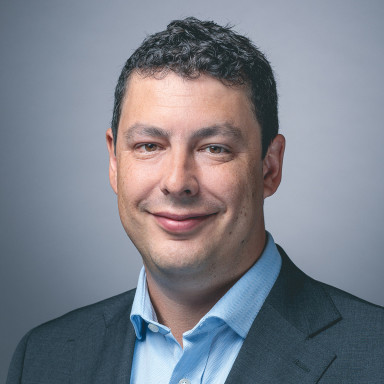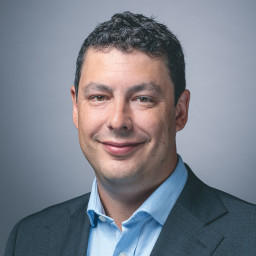The trust aims to deliver long-term growth with a focus on preserving wealth in weaker markets
Manager Peter Spiller has been running the trust since 1982 and more recently Alastair Laing and Chris Clothier have been appointed as co-managers
The team have a strong track record of providing long-term investment returns with lower volatility than shares
How it fits in a portfolio
Rather than trying to shoot the lights out, Capital Gearing Trust’s primary aim is to preserve investors’ capital. While there’s no formal benchmark for the trust, the manager tries to grow investors' money by more than inflation over the long run. He defines inflation as the Retail Prices Index (RPI) and long-run means more than five years.
As a result, it could form the foundation of a broad investment portfolio, bring some stability to a more adventurous portfolio, or provide some long-term growth potential to a more conservative portfolio.
Manager
Peter Spiller took over management of Capital Gearing Trust in 1982. He's since managed the trust using broadly the same investment philosophy throughout his tenure. He set up CG Asset Management in 2001, having previously worked as a strategy director at Cazenove & Co Capital Management. He’s also Chief Investment Officer at CG Asset Management.
Spiller is supported by two co-managers in Alastair Laing and Chris Clothier. Laing joined the team in 2011 and is also Chief Executive Officer at CG Asset Management. Clothier joined in 2015 and is also Chief Financial Officer for the business.
The three managers bring different experiences to the table in managing the trust, which helps the team find suitable investment ideas. Another reason for hiring Laing and Clothier was succession planning for the trust and the firm. The managers are supported by a small team that help with investment ideas as well as more administrative tasks.
While the company is run by a small team, we think they are suitably resourced to run the handful of strategies currently on offer.
Process
Spiller likes to keep things simple. He aims to shelter investors' wealth just as much as growing it. To do this, the trust is constructed around three ‘buckets’ of assets: Dry Powder, Risk Assets and Index Linked Bonds. The Dry Powder bucket is made up of cash, treasury bills and short-dated bonds. The purpose of this section of the trust is to hold its value during volatile times or when shares and bonds are going down in price.
The Risk Assets section is mainly invested in shares. The team don’t invest in company shares directly, instead they choose to invest in other trusts or funds. This gives them access to some specialist investments and also means the trust is invested in lots of shares in small proportions. This section of the trust is there to provide investment growth over the long-term.
Index Linked Bonds are the third bucket and the managers usually invest in US Treasury Inflation Protected Securities (TIPS) or UK Index-Linked Gilts. The purpose of this part of the trust is to provide some inflation shelter and for it to perform better when markets are under stress.
The amount invested in these buckets changes over time, depending on how the team feel about markets and where they see opportunities.
Investors in the trust should be aware that closed-ended funds can trade at a discount or premium to the net asset value (NAV). Unlike many other trusts, the manager aims to limit the size of the discount or premium to the net asset value (NAV). Towards the end of 2023, the trust experienced some challenges around implementing their process to keep the share price close to NAV. While this was disappointing, the challenges around implementation were relatively short lived and the process has been working as expected again since early 2024. The board have reviewed what happened during this period and have made suitable changes to ensure that this shouldn’t happen again in future. Even with these challenges, the implementation of this process still added value for investors in the trust.
During the 12 months to 31 March 2024, the managers have kept high level positioning broadly similar across the three buckets. The amount invested in shares has increased slightly from 26% to 28%, while the amount in index-linked government bonds has decreased from around 46% to 44%.
The manager has the flexibility to use derivatives and gearing (borrowing to invest) which, if used, adds risk. However, the manager has not used gearing in the past and has stated he has no intention to do so in future.
Culture
The firm’s managers are dedicated to the same investment philosophy that was established a long time ago. The group has always been clear about the way its range of funds are managed, and the managers don't stray into overly complicated areas of investment markets. Wealth preservation is key, and each manager adheres to this mantra.
CG Asset Management is owned by its employees, via an employee ownership trust. The managers also invest in the company’s strategies. Both factors mean that the trust managers are incentivised to perform well for investors and the company is proud that all of the asset managers they have ever employed remain in the business.
ESG Integration
All of the firm’s funds are run with a medium to long-term investment horizon in mind, with a focus on capital preservation. So, assessing whether society will support the business model over the long term, and whether management will act as good stewards of shareholders’ capital is an important part of the investment process.
The team is small and they do not have the resource that many larger firms do to consider ESG (Environmental, Social and Governance) matters. That said, they support the UK Stewardship Code and consider ESG factors when looking at what assets to invest in. Overall though, investment returns are the most important thing and they will invest in assets that are not very ESG friendly if they assess an opportunity as having an attractive risk and reward profile.
Cost
The trust's ongoing charge for the year to 31 March 2024 was 0.69%. Investors should refer to the latest annual reports and accounts and Key Investor Information for details of the risks and charging structure.
If held in a SIPP or ISA the HL platform fee of 0.45% (capped at £200 for a SIPP and £45 for an ISA) per annum also applies. Our platform fee doesn’t apply if held in a Fund and Share Account or in a Junior ISA.
As investment trusts trade like shares, both a buy and sell instruction will be subject to the HL share dealing charges.
Performance
Since Spiller created CG Asset Management in 2001, the trust has grown 412.94%* to the end of May 2024, which is an attractive return for a more conservative trust. This is ahead of the UK Retail Prices index of inflation and the FTSE All Share index, which have grown by 123.22% and 253.07% respectively over the same period. Remember past performance isn't a guide to future returns.
During the 12 month reporting period covered in the most recently issued report and accounts as at 31 March 2024, the trust lagged the FTSE All Share and RPI though. The Net Asset Value (NAV) return of 1.75% over the period was better than the share price return of 0.76%, as the discount to NAV increased over the period. The FTSE All Share and RPI returned 8.43% and 4.30% respectively over those 12 months.
Their risk assets bucket added value overall, with investments in shares and property performing strongly. Corporate credit (bonds) also provided positive returns over the year, as did investments in UK index linked gilts.
However investments in other index-linked government bonds, from the US and Japan, fell in value over the 12 months. As did their investment trust holdings, especially those in listed infrastructure.
At the time of writing the trust trades at a discount of 1.83%. This compares to an average discount of 2.55% over the last 12 months. All investments and any income they produce can fall as well as rise in value, so investors could get back less than they invest.
Annual percentage growth
May 19 – May 20 | May 20 – May 21 | May 21 – May 22 | May 22 – May 23 | May 23 – May 24 | |
|---|---|---|---|---|---|
3.91% | 12.26% | 7.14% | -7.97% | 2.38% | |
FTSE All-Share | -11.16% | 23.13% | 8.27% | 0.44% | 15.44% |
UK Retail Price Index | 1.04% | 3.32% | 11.66% | 11.33% | 2.96% |


